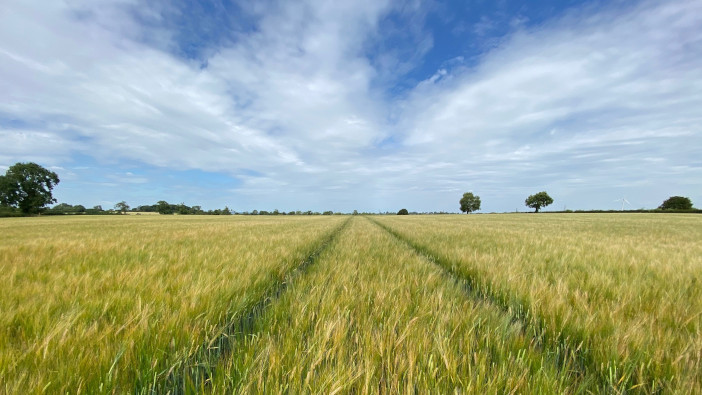Aberdeenshire farmer, Peter Chapman, collected his second Yield Enhancement Network (YEN) Gold award.
Mr Chapman achieved the 2021 best percentage of potential spring barley yield from his Sienna spring malting barley, from Limagrain UK. With the crop achieving 82% of its estimated potential yield of 9.7 tonnes per hectare and producing the highest specific weight of all 10 varieties in that category at 72 kilogrammes per hectolitre.
He also won Gold in the same category in 2020 with a crop of LG Diablo, which achieved 87% of its potential 11.1 t/ha yield.
When 2021’s summer brought an early drought, limiting all crops’ yield potentials, Mr Chapman was “pleasantly surprised” with Sienna’s performance. And, after the crop slightly out-yielded LG Diablo, Mr Chapman said he will grow it again this season, alongside LG Diablo and a small test area of the new Limagrain UK variety of spring barley: Jensen.
“Yield and specific weight are my main priorities when choosing varieties, then standing power and agronomics,” noted Mr Chapman; there is no single answer to maximising crop potential.
However, Mr Chapman always begins with careful variety selection and sowing good quality seed into the best possible conditions.
“Achieving good specific weights can often be a worry in Aberdeenshire, as although we get the extra day length in summer, there isn’t the same sunlight intensity as further south. I’ve therefore always been a big fan of high specific weight varieties and it was one of the main reasons we chose Sienna,” he said.
The farm used to home-save much of its seed, but a split field comparison between certified and home-saved seed, a few years ago, showed a clear advantage from using quality, certified seed, he adds.

Healthy and nutritious soil is also important, continued Mr Chapman: “Our soils are generally in very good condition, with organic matter contents of 7-9%, due to a history of livestock on the farm, plus regular applications of manure and compost.”
Last season, spring barley ground received farmyard manure and premium green waste compost when the Nitrate Vulnerable Zone (NVZ) application window opened in February, before being ploughed.
Crops received two fungicide sprays, on the 7 and 25 June, based around fluxapyroxad, prothioconazole and tebuconazole, with a growth regulator and micronutrients included in the first spray and folpet in the latter. The crop was sprayed off with glyphosate on 15 August, before harvest on 2 September.
A prolonged dry spell last June did result in some tillers being lost on Mr Chapman’s farm but crops still yielded well – with a rolling average of 7.5-8t/ha. “With a bit more moisture at the beginning of June, we perhaps could’ve been looking at 9 t/ha,” he suggested.
Running on a high input and certified seed route is ‘really paying for itself’, concluded Mr Chapman.


